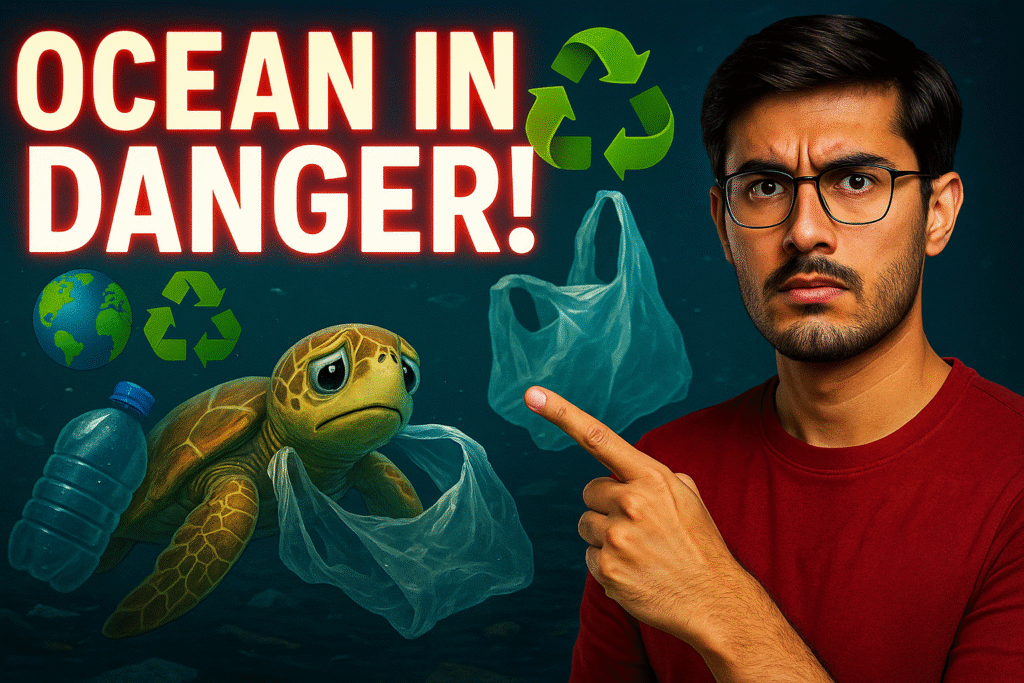Plastic pollution is one of the biggest environmental challenges facing our oceans today. Every year, millions of tons of plastic waste flow into seas and oceans, causing serious harm to marine life, ecosystems, and even human health. Despite the global scale of this crisis, only a handful of countries have taken strong and effective action to reduce plastic pollution and protect their waters.
The Scale of Plastic Pollution in Oceans
According to a 2020 report by the United Nations Environment Programme (UNEP), approximately 8 million metric tons of plastic enter the oceans each year. This plastic waste comes from land-based sources, such as littering, poor waste management, and industrial discharges, as well as from fishing gear and shipping activities.
The consequences are devastating:
- Over 800 marine species are affected by plastic debris through ingestion, entanglement, or habitat disruption.
- The so-called Great Pacific Garbage Patch, a floating island of plastic debris in the Pacific Ocean, covers an estimated 1.6 million square kilometers.
- Microplastics — tiny plastic particles less than 5 mm — have infiltrated marine food chains, raising concerns about their impact on seafood safety and human health.
Which Countries Are Taking Action?
Despite the urgent need, only a few countries have implemented effective policies and measures to combat ocean plastic pollution. Here are some leading examples:
1. Rwanda 🇷🇼
Rwanda is often praised for its strict and early action against plastic pollution. The country banned plastic bags in 2008, one of the first in the world to do so. Enforcement is strict, with fines and penalties for producing, importing, or using plastic bags. Rwanda’s example shows that strong government commitment and enforcement can lead to real change.
2. European Union (EU) 🇪🇺
The EU has taken major steps in recent years:
- In 2019, the EU approved the Single-Use Plastics Directive, which bans certain plastic items such as cutlery, plates, straws, and cotton buds by 2021.
- The EU promotes extended producer responsibility, making companies responsible for the plastic waste generated by their products.
- Member countries have committed to recycling 55% of plastic packaging waste by 2030.
This policy framework makes the EU a leader in plastic pollution control globally.
3. Canada 🇨🇦
Canada announced a ban on harmful single-use plastics such as checkout bags, straws, stir sticks, and cutlery, with implementation starting in 2021. The country also supports clean-up initiatives and invests in better recycling technologies.
4. Chile 🇨🇱
Chile became the first Latin American country to ban plastic bags nationwide in 2018. The government also promotes awareness campaigns and encourages businesses to use sustainable packaging alternatives.
5. Kenya 🇰🇪
Kenya’s plastic bag ban since 2017 is among the toughest in the world, with offenders facing fines up to $40,000 or jail time. The law has been enforced with serious penalties, significantly reducing plastic bag use.
6. Bangladesh 🇧🇩
Bangladesh was the pioneer in banning plastic bags back in 2002 after plastic pollution clogged drainage systems and worsened flooding in Dhaka. The ban is enforced in major cities, though challenges remain in rural areas.
Countries Struggling to Address the Problem
Many countries, including some with the largest plastic footprints, have not yet taken effective national action:
- India has announced bans on some single-use plastics, but enforcement is inconsistent and plastic pollution remains widespread.
- United States lacks a national ban on single-use plastics, with policies varying by state. Overall, the US still produces and disposes of large amounts of plastic waste.
- China, the world’s largest plastic producer and consumer, banned the import of plastic waste in 2018 and started limiting plastic use domestically, but plastic pollution continues to be a major challenge due to the scale of production and consumption.
Why Only Few Countries Are Taking Action?
Several reasons explain why global action is limited:
- Economic dependence on plastics: Many industries rely heavily on plastic products and packaging.
- Lack of infrastructure: Developing countries often lack effective waste collection and recycling systems.
- Political will and enforcement: Laws may exist but are not strictly enforced.
- Consumer behavior: Single-use plastics are cheap and convenient, making change slow without public awareness and alternatives.
What Needs to Happen?
To truly tackle ocean plastic pollution, coordinated global efforts are needed:
- Governments must implement and enforce strict bans and regulations on single-use plastics.
- Investment in waste management infrastructure is critical, especially in developing countries.
- Alternatives to plastics, such as biodegradable materials, must be developed and promoted.
- Public education campaigns to change consumer behavior are essential.
- International cooperation through treaties like the UN Treaty on Plastic Pollution (currently being negotiated) can help create binding commitments worldwide.
Conclusion
Plastic pollution is a grave threat to our oceans and planet. Although millions of tons of plastic enter the seas every year, only a few countries have taken meaningful steps to fight back. Nations like Rwanda, Kenya, the EU, Canada, Chile, and Bangladesh are leading by example, but most of the world is still lagging behind.
If we want to save our oceans and protect marine life, global action must accelerate now — with governments, industries, and individuals all playing their part.
🌍💙 Let’s keep the ocean plastic-free for future generations!

